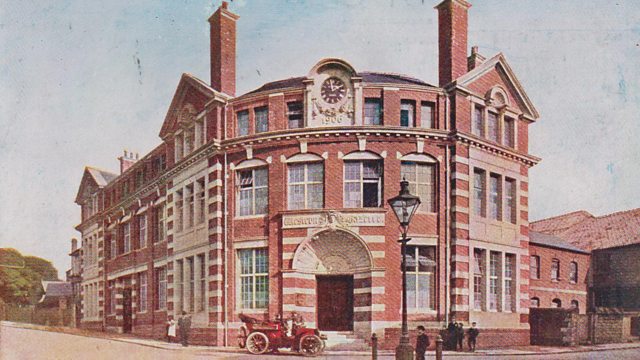Yeovil, Somerset: A Domesday Book of World War One
Chronicling how the conflict had affected the towns, villages and hamlets of Somerset
The old newspaper offices in the centre of Yeovil are just as impressive today as they were when they opened for business just eight years before the outbreak of World War One. Purpose-built in red brick and Bath stone with an ornate Renaissance-style frontage and clock, the building became a local landmark from the outset. The carved image of the Western Gazette masthead and the mythical messenger of the Gods, Mercury, radiated opulence and confidence to visitors and passers-by.
So perhaps it’s no great surprise that inside that impressive building, an equally grand and ambitious project was hatched towards the end of WW1. Joseph Worner had worked for the Gazette since 1888 and would end his journalistic career there in 1935 as assistant editor. But as the Great War entered its final few months, he had a vision of creating a permanent, written account of how the conflict had affected the towns, villages and hamlets of Somerset. He wanted every parish in the county to contribute to this extensive study of the home front. Just as William the Conqueror had ordered his Domesday Book of England’s wealth in 1086, so Joseph Worner wanted his own survey of Somerset at war. This became known as ‘The Parish Returns’.
His venture was successful to an extent. About a third of the county’s parishes responded to his call for information; 172 in total. The best response came from places where sales of the Western Gazette were healthy. Locations further away from Yeovil, in the north and west of the county, were less likely to take part and there are no returns from Exmoor at all. But those 1,193 individual pages which survive, with their first-hand accounts of life on the home front, provide an invaluable record which is thought to be unique in the UK.
The Parish Returns were written by leading figures in each community such as vicars, solicitors and head teachers. Collectively they reveal a county fully behind the war effort. The yellowing pages tell of munitions work, conker collections, knitted socks for soldiers, Red Cross hospitals, acts of gallantry, requisitioned manor houses, food parcels, endless fund-raising events and school boys helping with the harvest. From the commendable to the commonplace, they tell a story far removed from official war records, military histories and regimental diaries.
But one crucial question remains; what was Worner’s motivation for such detailed and time consuming research? Several theories have been put forward including a book, a special edition of the Western Gazette and a series of newspaper supplements. Sadly we will never know exactly what he wanted to do with all this information but he did go as far as sub-editing the text by hand in red pencil. Whatever Worner’s dream, by the 1920s it was over and the Parish Returns were tied together with ribbon and deposited in one of the strong rooms at the Somerset Records Office.
That’s where they have lain, badly catalogued and largely untouched, for more than 90 years. Their tales untold, their secrets safe. Until now.
Location: The Old Western Gazette Building, Sherborne Road, Yeovil, Somerset BA21 4YA
Image: The Western Gazette Building, courtesy of the Jack Sweet Collection
Duration:
This clip is from
Featured in...
![]()
91�ȱ� Somerset—World War One At 91�ȱ�
Places in Somerset that tell a story of World War One
![]()
91�ȱ� Front Life—World War One At 91�ȱ�
Everyday life in the towns, villages and countryside
More clips from World War One At 91�ȱ�
-
![]()
The loss of HMY Iolaire
Duration: 18:52
-
![]()
Scotland, Slamannan and the Argylls
Duration: 07:55
-
![]()
Scotland Museum of Edinburgh mourning dress
Duration: 06:17
-
![]()
Scotland Montrose 'GI Brides'
Duration: 06:41







